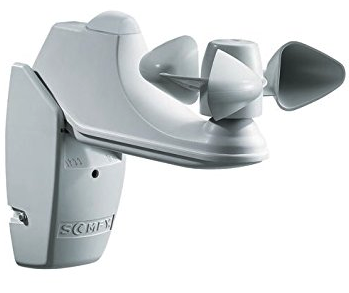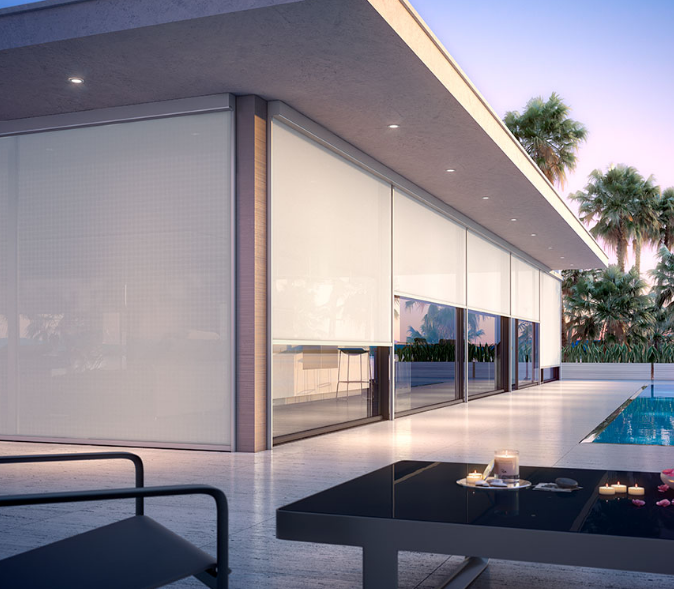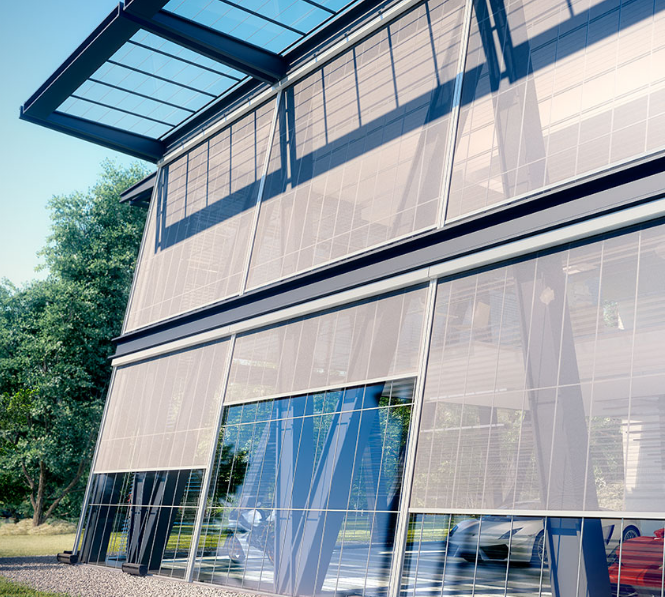As I present my Lunch & Learn program Exterior Shades – The Next Generation in Window Coverings, to architects, designers and consultants across the USA, I find myself addressing some similar misconceptions about this new trend in window shades. The most common myths about Exterior Shades are:
- Exterior shades can not survive stormy weather conditions
- They must have a short life expectancy
- Maintenance is problematic
- Interior shades are more economical then Exterior Shading Solutions
Before I address these myths one by one, it is important to understand that Exterior Solar Shades are becoming a significant part of many growing trends in architecture. For example, the Passive House movement has been gaining popularity in the USA. With the requirements of the Passive House to reduce energy costs by 90% over a traditional constructed home, Exterior Shading Solutions are becoming an integral part of Passive House design.
As a functioning element on the building façade, Exterior Shading Solutions are considered a part of Kinetic Architecture. Kinetic architecture is a concept through which buildings are designed to allow parts of the structure to move, without reducing overall structural integrity. Kinetic Architecture is becoming a force in sustainable building across the globe and a significant contributor to a growing trend in Exterior Window Shades. If these shades are to be successful as moving part of a structure, they must be reliable and robust. With that said, let’s examine the 4 most common myths about Exterior Shading Solutions:
1. Stormy Weather
High Winds – The number one concern I encounter is the issue with high winds. Yes, high winds could be a problem if an Exterior Shading Solution is not retracted before the high wind event occurs. That is why all Exterior Shading Solutions are installed with wind sensors. For example, the Cable Guided Exterior Solar Shade calls for the wind sensor to send a signal to its motor to retract when wind gusts reach 35 miles per hour. To give you an idea of how often that may occur, 35 mph is how a tropical depression is categorized. Between 39 to 73 mph is a tropical storm and over 74 mph we reach hurricane force winds. These wind conditions occur less then most people realize, but when there is a strong wind event, Exterior Shading Solutions are retracted to a closed position and protected. 
Rain, Snow & Ice – A rain with winds less then 35 mph will cause no issue for an Exterior Shading Solution. However, it is recommended that during harsh winter days with snow and ice that the shades or blinds are retracted. Snow and ice can prevent an Exterior Shading Solution from functioning properly. Additionally, it is beneficial to have the Exterior Shading Solution retracted because solar heat gain entering the space during wintertime is beneficial in reducing heating costs.
2. Life Expectancy
As an exterior product, our Exterior Shading Solutions are manufactured to withstand the elements are have a long life expectancy. Let’s break down the components:
- Aluminum Extrusions – All the enclosures are extruded in aluminum and anodized to offer an extremely durable and long lasting finish. This process provides a very high resistance to corrosion.
- Motors – Line Voltage shade motors have, over the past 25 years, proven to be very reliable and robust. We have removed old shades where the fabric has worn out but the motor still working without any issues. Today’s basic line voltage motors while only warrantied for 5 years has the potential to last a quarter century or more without question.
- Fabrics – The major manufacturer of fabrics for Exterior Shading Solutions is Serge Ferarri. They serve the Fabric Architecture community throughout the world with amazing durable and long lasting fabrics. There proprietary technology called Precontraint creates a fabric that won’t tear or stretch and is used on retractable roofs in stadiums worldwide. Our Exterior Shading Solutions use the neile fabrics.
3. Maintenance
Anything on the façade of a building needs some type of periodic maintenance. This is also true for Exterior Shading Solutions. However, in the planning of these systems, we intentionally design them with the lowest maintenance parts on the exterior. Let’s examine these external elements:
- Aluminum Extrusions – There is no maintenance required for any of the aluminum extrusions except an occasional washing, which can be carefully done with a pressure washer. You do not want to spray under the enclosure that protects the roller, motor and power connections.
- Cables – The 6mm cables need to be checked for tension occasionally.
- Motors – The motor is the only part that may ever need to be replaced. The motor is located in the shade roller tube and is easily repaired.
- Fabrics – The only maintenance ever needed on the fabrics is an occasional cleaning with a power washer.
- Controls – Our controls are placed in a centralized interior location for easy programming and diagnostics. Based on dry contact signals, as opposed to data and software control, the system is easy to operate and maintain.

4. Costs
This myth is my favorite to debunk. There is a wide held belief that Exterior Shading Solutions cost more then interior shades. This is not the case! The biggest jump in price will be from a manual system to a motorized system, however there is a very nominal price different between interior and exterior motorized soutions. The point is, is that if you are planning to do a motorized shade anyway, why not put it on the exterior where you can receive three times better performance and payback then an interior shade.

Conclusion
The bottom line is that Exterior Shading Solutions by InSync Solar have been designed to deal with bad weather effectively and safely, have a long lifetime in service if they are maintained properly and cost no more then interior shades. The benefits include tremendous reductions on solar heat gain and a 3 time faster payback over interior shades.
{{cta(‘ab5bb3dd-773c-4050-8381-b32aefdf2821’)}}
{{cta(‘7fc41619-393a-44f3-bfac-65f105d8a90e’)}}


